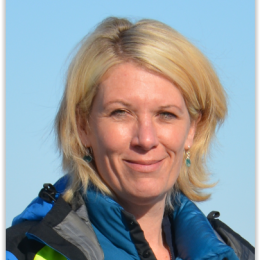Research project Ryder Glacier Expedition 2019
The Ryder 2019 expedition with the Swedish icebreaker Oden targets the unexplored marine realm of Ryder Glacier, more specifically the Sherard Osborne Fjord and adjacent area of northern Nares Strait and the southern Lincoln Sea.

Ryder 2019 is a multidisciplinary expedition, spanning the fields of atmospheric chemistry and physics, archeology, biology, climatology, ecology, genomics, glaciology, oceanography, marine geology, geophysics and geochemistry. The overarching goal is to investigate the dynamics and development of the marine cryosphere and ocean conditions over time. Earth’s marine cryosphere includes glaciers extending into the ocean, ice sheets with their base suppressed below sea level, sea ice, gas hydrates and subsea permafrost.
Project description

Scientific motivation
One of the primary scientific motivations of the expedition is related to the role of outlet glaciers, such as Ryder Glacier, draining the Greenland Ice Sheet into the ocean. The dynamics of Greenland’s outlet glaciers represent an essential, but poorly constrained, part of our understanding of future sea-level rise in a warming climate. Critical to their stability are the roles of sea ice, floating ice tongues, bedrock and the shape of the seafloor.
Some of the specific key scientific questions the Ryder 2019 Expedition aims to answer include:
- What are the causes for observed patterns and sudden dynamic changes of the marine cryosphere of northern Greenland?
- What is the potential contribution to global sea-level rise from the northern sector of the Greenland Ice Sheet in a warming climate?
- What are the dynamic roles of floating ice tongues and sea ice for the stability of northern Greenland outlet glaciers?
- How does geology (bedrock and/or the shape of the seafloor) control the retreat dynamics of the northern Greenland Ice Sheet?
- What is the role in accelerating glacial melting of inflowing warmer water of Atlantic origin towards the outlet glaciers?
- What are the effects of glacial meltwater for the nutrient budget and productivity of the coastal marine ecosystem? What are the effects of glacial meltwater on the CO2 system and ocean acidification?
The logistics of the Ryder 2019 Expedition is organized and primarily supported by Swedish Polar Research Secretariat. Additional support comes from Center for Coastal and Ocean Mapping at the University of New Hampshire, Stockholm University, The Nippon Foundation and the US Arctic Research Commission. Individual science programs are supported by various science granting agencies and foundations. The multibeam bathymetric data collected will be provided to The Nippon Foundation – GEBCO – Seabed 2030 project.
Affiliations:
CCOM/JHC Center for Coastal and Ocean Mapping/Joint Hydrographic Center, UNH, USA
LU Lund University, Sweden
MUN Memorial University of Newfoundland, Canada
NRM The Swedish Museum of Natural History, Sweden
OSU Oregon State University, USA
SU Stockholm University, Sweden
UC Universtiy of Copenhagen, Denmark
UG University of Gothenburg, Sweden
UMD University of Mayland
UNH Universtiy of New Hampshire, USA
USARC United States Arctic Research Commission, USA
USGS U.S. Geological Survey, USA
Project members
Project managers
Martin Jakobsson
Professor of Marine geology and geophysics

Professor Larry Mayer
CCOM Director/JHC Co-Director

Members
Volker Brüchert
Associate professor of Biogeochemistry

Julek Chawarski
Marine Biologist

Fredrik Dalerum
Ecologist

Felicity Alice Holmes
Post-doctoral researcher

Carina Johansson
Research engineer

Professor Hans Linderholm

Professor Alan Mix

Nina Kirchner
Professor of Glaciology

Johan Nilsson
Professor of Meteorology

Matthew O'Regan
Professor of Marine geology

Abhay Prakash
Postdoctoral researcher

Christian Stranne
Associate professor of Marine geophysical mapping and modelling

More about this project
Expedition logs
John Farrell | Water Column Imaging/Physical Oceanography
Anders Götherström | DNA and Ecology
Tamara Handl | Postgraduate student
Martin Jakobsson | Co-Chief
Johan Nilsson | Water Column Imaging/Physical Oceanography
Emelie Ståhl | Postgraduate student



